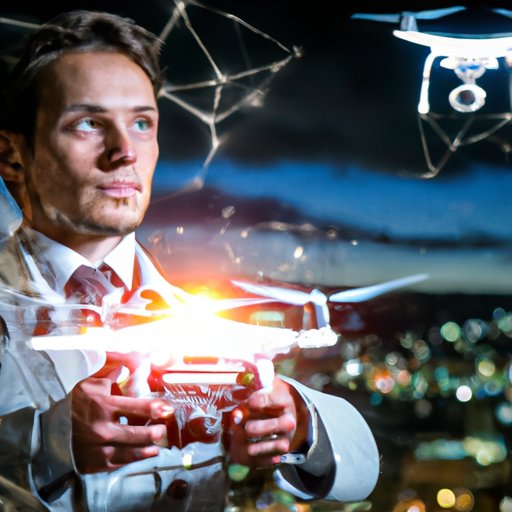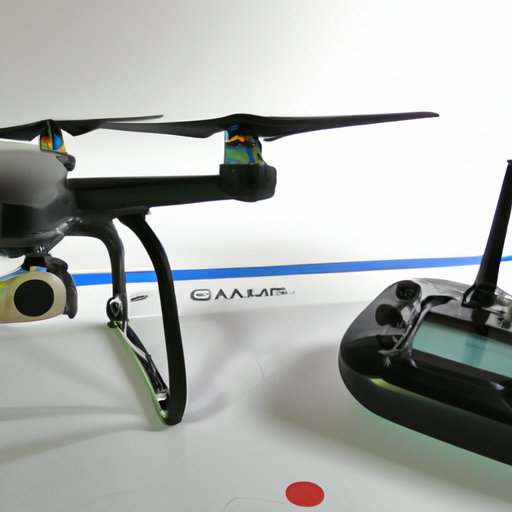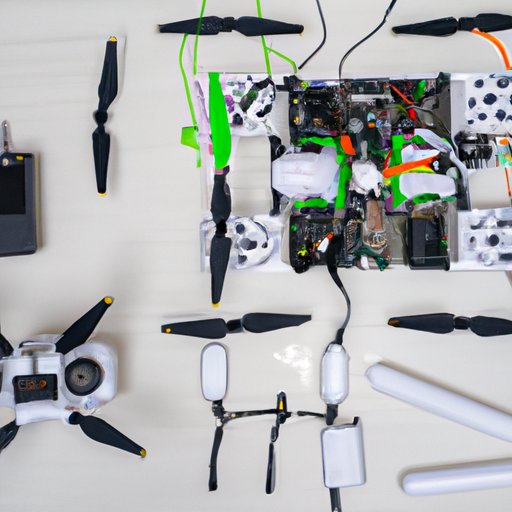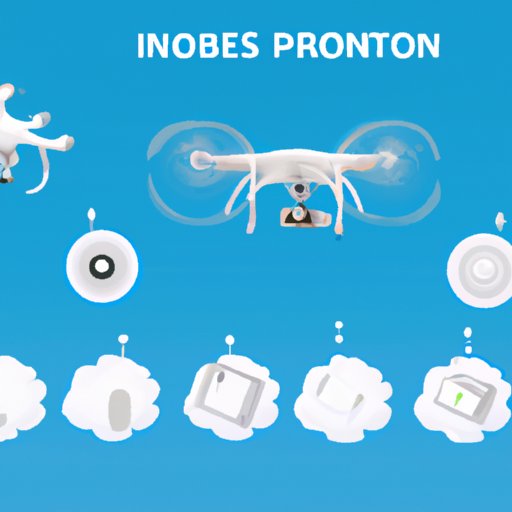Introduction
Drones have become an increasingly popular technology in recent years, with a wide range of applications from aerial photography to search and rescue operations. But what exactly is a drone and what technology do drones use?
A drone, also known as an unmanned aerial vehicle (UAV), is an aircraft without a human pilot onboard. Drones are typically controlled remotely by a pilot on the ground or autonomously through a computer program. They can be used for a variety of purposes, such as aerial photography, surveillance, search and rescue operations, and delivery services.
The use of drones has grown exponentially over the past decade due to advances in technology that have made them safer, more reliable, and easier to use. As a result, drones are being used in a wide variety of industries, from agriculture and construction to law enforcement and emergency response.

Exploring the Technologies Behind Drone Flight
At their core, drones are powered by a combination of hardware and software components. Let’s take a closer look at each of these components and how they work together to enable drone flight.
Hardware Used in Drone Technology
At the heart of every drone is a set of hardware components that allow it to take off, navigate, and land safely. The most common hardware components in drone technology include:
- Motors – Motors provide the thrust needed for a drone to take off and move through the air.
- Propellers – Propellers convert the rotational energy from the motors into forward thrust.
- Batteries – Batteries provide the power needed to run the motors and other components of the drone.
- Frames – Frames provide the structure of the drone, allowing all of its components to be connected securely.
- Controllers – Controllers allow the pilot to control the drone’s movements remotely.
Software Used in Drone Technology
In addition to the hardware components, drones also rely on software to operate. The most common types of software used in drone technology include:
- Autopilot Software – Autopilot software allows drones to fly autonomously by following a pre-programmed flight plan.
- Operating Systems – Operating systems provide the necessary tools for controlling and managing a drone’s hardware components.
- GPS Navigation Systems – GPS navigation systems allow drones to accurately track their position and adjust their flight path accordingly.

The Role of Sensors in Drone Operation
Sensors play an essential role in enabling drones to fly safely and efficiently. Sensors allow drones to gather data about their environment, such as altitude, speed, and direction, and use this data to make adjustments to their flight path if necessary.
There are several different types of sensors used in drone technology, including:
- Vision-Based Sensors – Vision-based sensors use cameras and image recognition algorithms to detect objects in a drone’s environment.
- Inertial Measurement Unit (IMU) Sensors – IMU sensors measure a drone’s orientation, acceleration, and rotation.
- Lidar Sensors – Lidar sensors use lasers to scan and map a drone’s environment in three dimensions.
- Radar Sensors – Radar sensors use radio waves to detect objects in a drone’s environment.
Examining Drone Navigation Systems
Navigation systems are an important component of drone technology. These systems allow drones to determine their location, track their progress, and adjust their flight path as needed.
The two most commonly used navigation systems in drone technology are the Global Positioning System (GPS) and the Visual Positioning System (VPS). GPS uses satellites to determine a drone’s location, while VPS uses cameras and image recognition algorithms to detect landmarks and identify its location.
In addition to these navigation systems, some drones also feature autonomous flight modes, which allow them to fly without constant input from a human operator. These modes can be used for tasks such as mapping, surveying, and search and rescue operations.
Investigating the Automation and Control Systems of Drones
The automation and control systems of drones are responsible for controlling the aircraft’s movements and ensuring that it follows its pre-programmed flight plan. The two main components of these systems are autopilot systems and intelligent flight control systems.
Autopilot systems allow drones to fly autonomously by automatically adjusting their flight path and responding to external factors such as wind and turbulence. Intelligent flight control systems are responsible for maintaining stability and maneuverability during flight, as well as providing safety features such as obstacle avoidance.
How Artificial Intelligence Enhances Drone Performance
Artificial intelligence (AI) is playing an increasingly important role in drone technology. AI algorithms are used to enhance drone performance in a variety of ways, including:
- Machine Learning Algorithms – Machine learning algorithms are used to analyze data collected by sensors and improve a drone’s flight capabilities.
- Image Recognition and Object Detection – AI algorithms can be used to detect objects in a drone’s environment and avoid any potential hazards.
By leveraging AI, drones can become smarter and more efficient, allowing them to perform complex tasks with greater accuracy and reliability.

Understanding the Communications Networks That Power Drone Use
Communication networks are essential for enabling drones to communicate with their pilot and other devices. The most common types of communication networks used in drone technology include:
- Wi-Fi Connectivity – Wi-Fi is the most common type of network used to connect drones to their pilot or other devices.
- Cellular Connectivity – Cellular networks allow drones to communicate with their pilot even when they are out of range of a Wi-Fi network.
- Dedicated Short Range Communications (DSRC) – DSRC networks allow multiple drones to communicate with each other and their pilot simultaneously.
Conclusion
Drones are powered by a variety of technologies, including hardware and software components, sensors, navigation systems, automation and control systems, and communication networks. By leveraging these technologies, drones can perform a variety of tasks with greater accuracy and reliability.
The use of drones is rapidly growing, and advances in technology are making them increasingly versatile and capable. As these technologies continue to evolve, drones will become an even more powerful tool for a variety of applications.
(Note: Is this article not meeting your expectations? Do you have knowledge or insights to share? Unlock new opportunities and expand your reach by joining our authors team. Click Registration to join us and share your expertise with our readers.)
